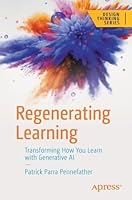
Machine Learning on Geographical Data Using Python: Introduction into Geodata with Applications and Use Cases
- Length: 327 pages
- Edition: 1
- Language: English
- Publisher: Apress
- Publication Date: 2022-08-31
- ISBN-10: 1484282868
- ISBN-13: 9781484282861
Get up and running with the basics of geographic information systems (GIS), geospatial analysis, and machine learning on spatial data in Python. This book starts with an introduction to geodata and covers topics such as GIS and common tools, standard formats of geographical data, and an overview of Python tools for geodata. Specifics and difficulties one may encounter when using geographical data are discussed: from coordinate systems and map projections to different geodata formats and types such as points, lines, polygons, and rasters. Analytics operations typically applied to geodata are explained such as clipping, intersecting, buffering, merging, dissolving, and erasing, with implementations in Python. Use cases and examples are included. The book also focuses on applying more advanced machine learning approaches to geographical data and presents interpolation, classification, regression, and clustering via examples and use cases. This book is your go-to resource for machine learning on geodata. It presents the basics of working with spatial data and advanced applications. Examples are presented using code and facilitate learning by application.
What You Will Learn
- Understand the fundamental concepts of working with geodata
- Work with multiple geographical data types and file formats in Python
- Create maps in Python
- Apply machine learning on geographical data
Who This Book Is For
Readers with a basic understanding of machine learning who wish to extend their skill set to analysis of and machine learning on spatial data while remaining in a common data science Python environment







